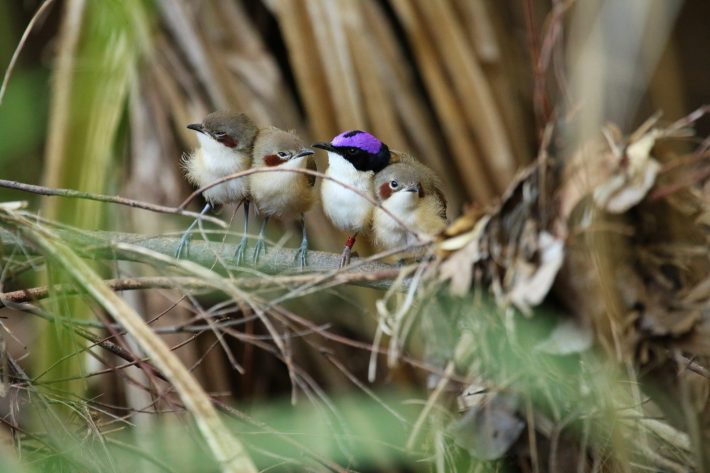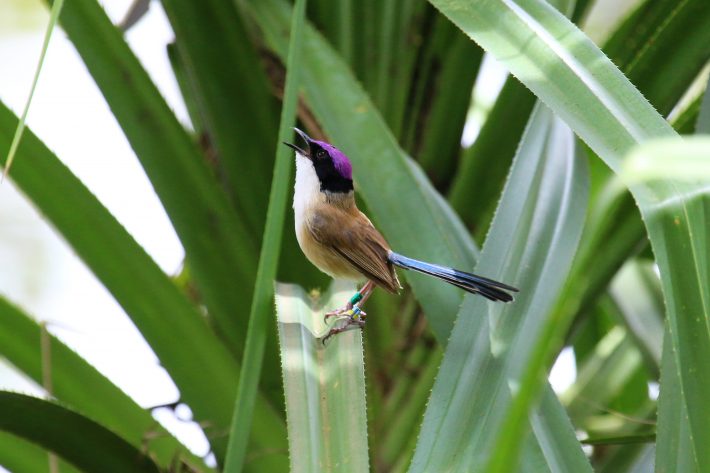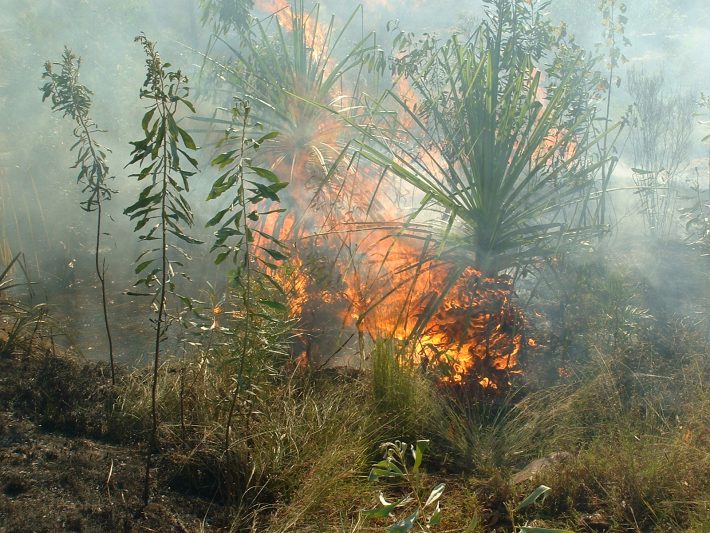How do fires in river habitats affect wildlife?
Monash University scientists described the findings of a 10 year study on the effect of fires (both high and low intensity) in river habitats, in a new Journal of Applied Ecology paper.

New research from Monash University discovers that fires in riparian zones – the area between land and a river/stream – in Australia’s tropical savannas affect the breeding success and survival of endangered Western purple-crowned fairy-wrens, which live exclusively along rivers and creeks.
Large, destructive fires can be mitigated with the practice of prescribed burns. This involves deliberately creating fires during the early dry season, when they typically burn at a low intensity. Australian land managers often employ this strategy for conservation and carbon farming purposes. However, despite their importance, fire management approaches to best protect riparian zones in particular aren’t widely understood.

In a new study of fires in riparian zones, researchers have found that the fairy-wren population was impacted by fire – regardless of intensity – for over 2.5 years, in two ways. With low intensity fires, reproductive success dropped during and immediately after the fire. However with high intensity fires, birds were found to die 2-8 months after the fire, but not during the fire itself.
Lead author Dr Niki Teunissen said “Our study highlights the need for future research to improve our understanding of the impact of riparian fire in savannas”. Riparian zones are home to lots of wildlife, including the Western purple-crowned fairy-wrens, but they are vulnerable to fire. They also serve as a passageway to roam the landscape and seek cooler climates.
From 2011 to 2021, the researchers studied the wren’s breeding, density, dispersal and breeding along 15km of creek and river. Using this data, they compared the effects of both low and high intensity fire in the dry season on riparian vegetation and wildlife.

“Our findings can be used to improve fire management strategies in tropical savannas,” continued Dr Teunissen. “As Western purple-crowned wrens represent a biological indicator for riparian health, we urge fire managers and scientists alike to give greater consideration to the effects of fire on riparian habitat.”
Article based off a Monash University press release.
Read more:
, , , , & (2023). Low- and high-intensity fire in the riparian savanna: Demographic impacts in an avian model species and implications for ecological fire management. Journal of Applied Ecology, 00, 1– 10. https://doi.org/10.1111/1365-2664.14463
Like what we stand for?
Support our mission and help develop the next generation of ecologists by donating to the British Ecological Society.